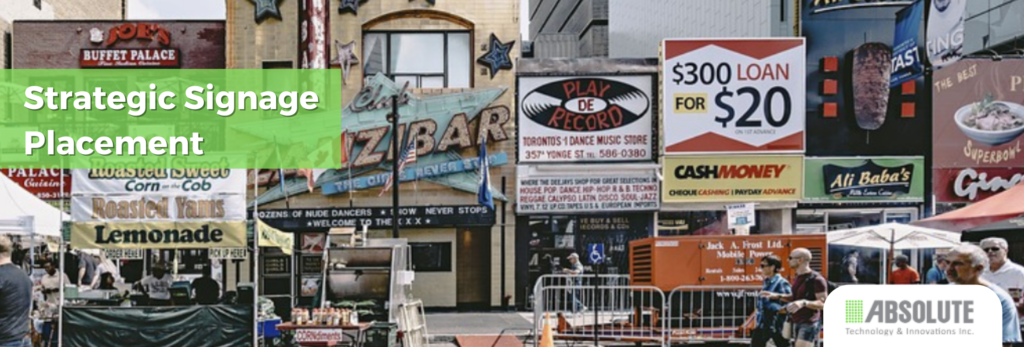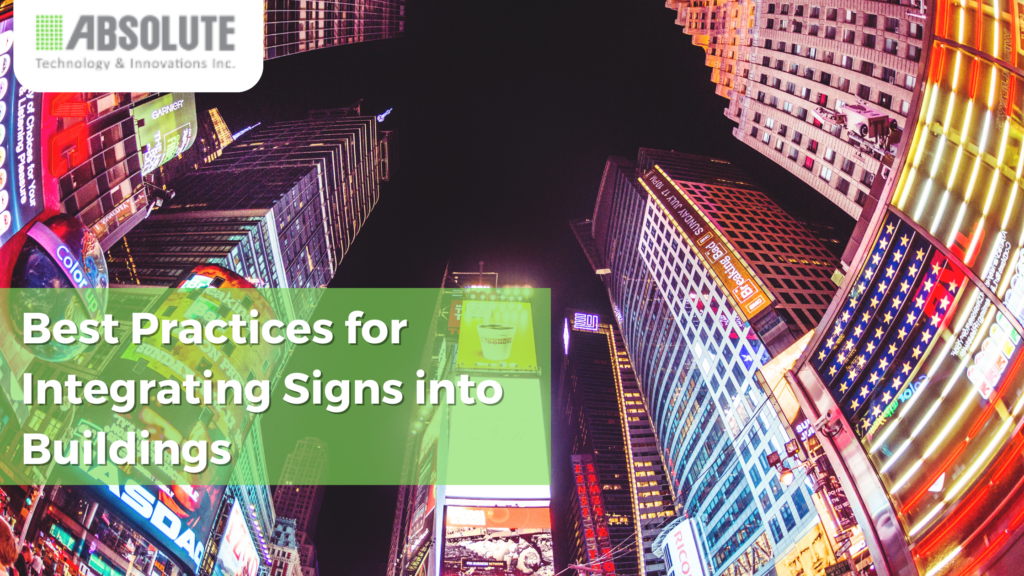In today’s competitive business landscape, effective signage plays a vital role in capturing attention, conveying messages, and establishing a strong brand presence. When it comes to integrating signs into buildings, there are several best practices that can help you stand out from the crowd and maximize the impact of your signage. In this article, we will explore the key strategies and techniques that can help you create visually appealing, informative, and memorable signage that not only enhances the aesthetics of your building but also attracts potential customers and boosts your online visibility.
Understanding the Importance of Signage
Signage serves as a powerful communication tool that conveys information, directs people, and creates a lasting impression. It acts as a visual representation of your brand and can significantly influence how your business is perceived. By investing in well-designed and strategically placed signs, you can effectively grab the attention of passersby, increase foot traffic, and ultimately drive sales.
Conducting a Comprehensive Site Analysis
Before designing and installing signage, it is crucial to conduct a thorough site analysis. This analysis helps identify the optimal locations for signs, taking into account factors such as visibility, traffic patterns, and architectural features. By understanding the unique characteristics of your building and its surroundings, you can determine the most effective placement for your signs, ensuring maximum visibility and impact.

Creating Compelling and Brand-Consistent Designs
When it comes to signage, design is paramount. Your signs should reflect your brand’s identity and convey your message in a clear and visually appealing manner. Consider incorporating your brand’s color palette, typography, and logo into the signage design to create a cohesive and memorable visual identity. Make sure the text is easily readable from a distance and use high-quality images or graphics to enhance the overall appeal.
Utilizing Strategic Signage Placement Integrating Signs
Strategic placement of signage can significantly impact its effectiveness. Consider the flow of foot traffic and place signs in high-visibility areas where they can easily catch the attention of passersby. Entrance areas, storefront windows, and exterior walls are ideal locations for attracting attention and engaging potential customers. Additionally, consider directional signage to guide visitors to specific areas within your building, creating a seamless and user-friendly experience.

Embracing Digital Signage Technology
In today’s digital age, incorporating digital signage into your building can offer a dynamic and engaging experience for your audience. Digital signs allow for real-time updates, interactive content, and targeted messaging. Whether it’s displaying promotions, showcasing product videos, or providing useful information, digital signage provides endless possibilities to captivate and inform your audience.
Ensuring Accessibility and Compliance Integrating Signs
Accessibility should be a priority when designing and installing signage. Ensure that your signs comply with local regulations and accessibility guidelines, including proper font sizes, color contrasts, and Braille for visually impaired individuals. By prioritizing accessibility, you not only ensure inclusivity but also demonstrate your commitment to providing a welcoming environment for all.
Monitoring and Optimizing Signage Performance
To ensure the ongoing effectiveness of your signage, it is essential to monitor its performance regularly. Keep track of foot traffic, sales data, and customer feedback to evaluate the impact of your signs. This feedback can help you identify areas for improvement and optimize your signage strategy over time.

Conclusion
Integrating signs into buildings requires careful planning, strategic thinking, and a deep understanding of your brand’s identity and target audience. By following the best practices outlined in this article, you can create signage that stands out, drives foot traffic, and enhances your brand’s visibility. Remember, signage is not just about aesthetics; it is a powerful marketing tool that can contribute to your business’s success.
